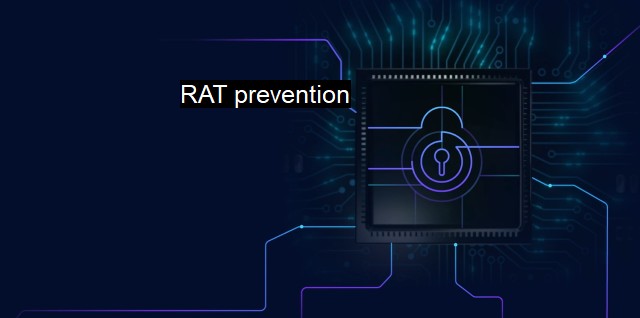What is RAT prevention?
Prevent RAT Attacks and Stay Safe: Effective Strategies for Cybersecurity and Antivirus
RAT prevention is a critical component of cybersecurity measures taken to protect systems from remote access trojan (RAT) attacks. A remote access trojan is a type of malware that, when successfully installed in a computer system or network, can grant unauthorized individuals access to the victim's device. This access can be utilized to carry out various illegal activities, including but not limited to stealing sensitive information, monitoring activities, altering system configurations, and even taking control of the entire targeted network.Understanding how a RAT functions is essential in comprehending the severity of its impact. A remote access trojan, after infiltrating a system unnoticed, masquerades as a legitimate program or file. Users often unknowingly download these malicious files or applications when visiting compromised websites or opening infected attachments. RATs tend to be sophisticated enough to bypass antivirus software and remain undetected in systems for long periods, continuously causing damage or gathering data.
This is where the concept of RAT prevention comes into play as an integral part of an organization's antivirus strategy. Since the potential damage that could be inflicted by a RAT can be significant, focusing on preventative strategies is even more crucial than solely relying on detection methods. Considering RATs persistent ability to evade many antivirus solutions, preventing penetration in the first place stands as the most effective way to stay protected.
RAT prevention strategy can be focused on several key aspects. The first is educating users about online safety protocols, such as the dangers of downloading attachments or applications from unverified sources. Since a large majority of RAT infections occur through such actions, establishing conscious behavior here significantly reduces the risk.
Secondly, ensuring all software, applications, and systems are up to date is crucial. This is because updates generally include patches for known vulnerabilities which RATs may exploit to infiltrate systems. Proper management and timely application of such patches elevate the overall security of a network or a device.
Installing a robust antivirus solution is crucial for RAT prevention. Good antivirus software must be capable of real-time protection and rapid scanning of downloads. it should provide a firewall feature that monitors inbound and outbound network traffic. It is also crucial to keep the antivirus software up-to-date so it can respond to emerging RATs.
Businesses and individuals alike should perform regular system backups. This offers a fallback plan if a RAT attack occurs and can greatly expedite the recovery process.
It's also critical to employ network level security measures such as Intrusion Detection Systems (IDS) and Intrusion Prevention Systems (IPS), capable of monitoring and policing network traffic for any suspicious activities.
Incorporating a robust password management strategy pays dividends in RAT prevention. Complex, unique passwords make it harder for RAT payloads that may have penetrated an outer layer of security to make headway into further system penetration.
Lastly, the practice of limiting user access rights can help reduce risk. Eliminating unnecessary software, protocols and services reduces the number of potential vulnerability points a RAT could exploit. If a RAT is inadvertently installed on a system with limited access rights, its impact can be significantly reduced.
RAT prevention, when done correctly, can be an effective way to secure networks and systems. It requires education about cyber threats, maintaining updates, deploying leading-edge antivirus measures, regular backups, tight access controls, and sound password practices. In a world where cyber threats are increasingly advanced and evolving, focusing on RAT prevention is not just beneficial, but crucial for cybersecurity.

RAT prevention FAQs
What is rat prevention in cybersecurity?
Rat prevention in cybersecurity refers to measures taken to prevent the infiltration of Remote Access Trojans (RATs) into a device or network.How do RATs infiltrate a device or network?
RATs can infiltrate devices or networks through spam emails, phishing links, or unsecured downloads from the internet.What are the consequences of a RAT infiltration?
A RAT infiltration allows the attacker to gain unauthorized access to a device or network, steal sensitive data, and take control of the device or network.What measures can be taken for rat prevention?
Some of the measures that can be taken include updating antivirus software, avoiding suspicious emails and links, and installing firewalls to block unauthorized access. Regular backups of important data and swift action when an infiltration is suspected can also prevent significant damage.| | A | | | B | | | C | | | D | | | E | | | F | | | G | | | H | | | I | | | J | | | K | | | L | | | M | |
| | N | | | O | | | P | | | Q | | | R | | | S | | | T | | | U | | | V | | | W | | | X | | | Y | | | Z | |
| | 1 | | | 2 | | | 3 | | | 4 | | | 7 | | | 8 | | |||||||